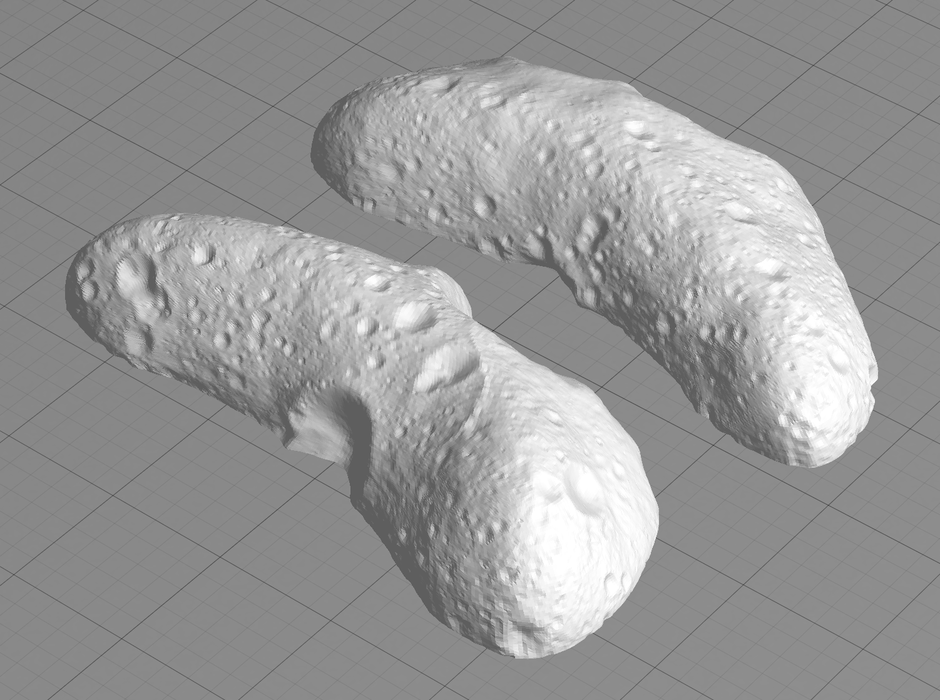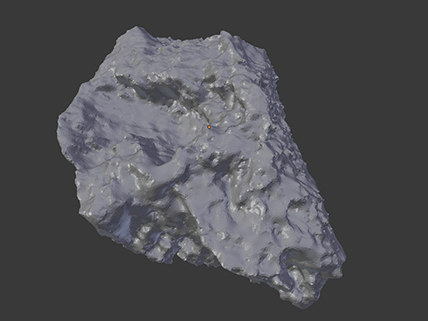How the blind can be taught to explore the galaxy using 3D printing technology
3D-printed model of asteroid Eros. Picture owned by NASA
NASA has unleashed the potential for blind kids to 'feel' asteroids and planetary surfaces. In New Zealand, Arturo Pelayo wants to set up a network of 3D printing resources to teach blind kids the wonders of the stars.
How do you teach a child who has no sight about the craters on the moon, or what a star might look like? NASA researchers have managed to harness the power of 3D technology to produce tactile objects to help the blind visualise Mars, the moon and asteroids.
Two astronomers have taken the development a giant step further. Carol Christian and Antonella Nota of the Space Telescope Science Institute in Baltimore, Md., are experimenting with the innovative technology to transform astronomy education by turning images from NASA's Hubble Space Telescope into tactile 3D pictures for the blind to explore celestial wonders.
In New Zealand Arturo Pelayo, a technology consultant from Mexico who now calls New Zealand home, is excited about making NASA’s resources available here, integrating it into the education system for the blind.
Pelayo came upon NASA's 3D library, offering files to print tiles of the moon, Mars. "I was immediately intrigued by what it could mean for learning."
He is now hoping to get innovators and the public excited about turning dusty 3D printers sitting in homes or office corners, into a network of resources to teach the blind about astronomy, meteorology, anthropology, architecture, chemistry, biology and physics among others.
New Zealand can be a test bed for the world in harnessing the power 3D printing technology can offer. His first plan is to develop a nation-wide system to deliver the 3D models and support future resources, for blind Kiwi kids.
His effort to raise money from the crowd through Pledgeme in December last year for his Tactile Astronomy project was unsuccessful. His target was $12,500 but only $437 was pledged. Pelayo has had over 12 years’ experience in product and service design consulting, across America, Germany, the UK, Mexico, and now NZ.
He is keen for corporates and the public to step in to help him drive the project. “There is a tremendous potential, and implication, from 3D technology, especially in education, starting with the blind.”
Pelayo’s vision is to create a system whereby 3D resources will be delivered across satellite offices, beginning with those of the Blind Foundation.
3D printed: An iron-nickel meteorite from Mars named Block Island.
Picture owed by NASA
For example, if a parent want to help his child learn about the face of the moon, he or she can go to any of the 12 satellite offices to access the files to print the 3D models, use the 3D printers to print without incurring the costs associated with having to own a personal 3D printer. The satellite offices or resource centres will be serviced and maintained by a network of technicians, and expert users who can train the 3D printer users.
Educating the blind is challenging, with only one school catering to the whole of Auckland’s blind children, he says. Further, 70% of the blind in New Zealand do not live in the greater Auckland area.
https://www.youtube.com/watch?v=hvpXD-ATppI
Exploring the stars for the blind, made possible by 3D printing
Using a well-structured resource system, which can be easily accessed, can help improve services to the blind, as well as the wider community, he says.
What he needs is some funding to design and adapt lesson plans, purchase 3D printers (he will also take donations of 3D printers), print parts, build kits for lesson plants, among others.
He says his plan is to work with The Blind Foundation, and BLENNZ (The Blind and Low Vision Education Network New Zealand, Homai campus), and Manurewa High School. He is keen to get corporate sponsors to help fund the 3D resources library.
New Zealand’s wider community should be able to replicate this system, augmenting 3D technology in education and learning experiences, he says.
“3D can have an incredible impact on society. It is already happening in pockets, for example in Christchurch (rebuild). Imagine what NZ can look like if we can harness 3D technology fully, especially in the industrial sector.
“I have friends who have their (dental) crown mould (for teeth) printed for less than $300 (against thousands of dollars),” he says.
Pelayo says NZ could take the science behind 3D and apply the technology widely in the manufacturing industry. “I am excited about what we can do (with 3D printing).”
Ideatech 27th January 2015


